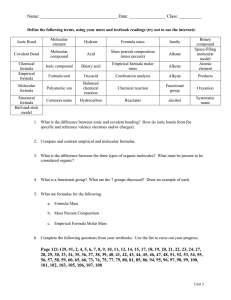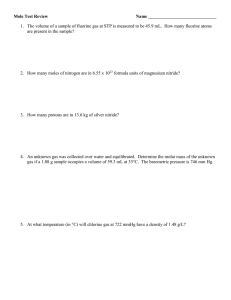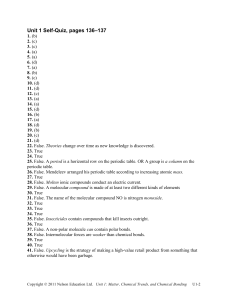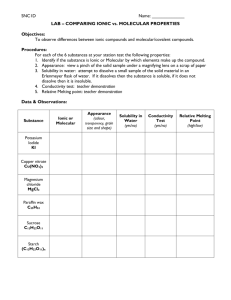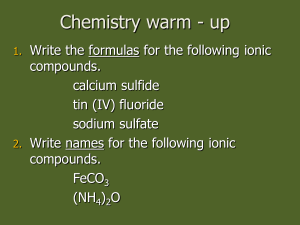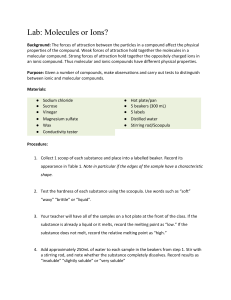Chemistry study guide
advertisement
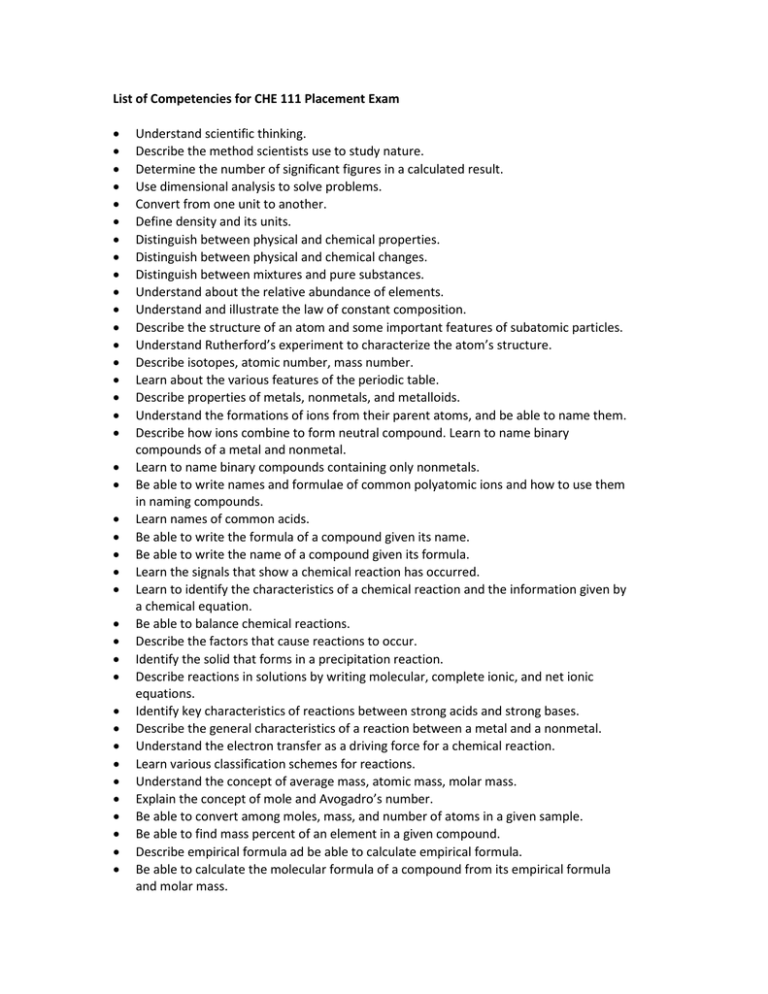
List of Competencies for CHE 111 Placement Exam • • • • • • • • • • • • • • • • • • • • • • • • • • • • • • • • • • • • • • • Understand scientific thinking. Describe the method scientists use to study nature. Determine the number of significant figures in a calculated result. Use dimensional analysis to solve problems. Convert from one unit to another. Define density and its units. Distinguish between physical and chemical properties. Distinguish between physical and chemical changes. Distinguish between mixtures and pure substances. Understand about the relative abundance of elements. Understand and illustrate the law of constant composition. Describe the structure of an atom and some important features of subatomic particles. Understand Rutherford’s experiment to characterize the atom’s structure. Describe isotopes, atomic number, mass number. Learn about the various features of the periodic table. Describe properties of metals, nonmetals, and metalloids. Understand the formations of ions from their parent atoms, and be able to name them. Describe how ions combine to form neutral compound. Learn to name binary compounds of a metal and nonmetal. Learn to name binary compounds containing only nonmetals. Be able to write names and formulae of common polyatomic ions and how to use them in naming compounds. Learn names of common acids. Be able to write the formula of a compound given its name. Be able to write the name of a compound given its formula. Learn the signals that show a chemical reaction has occurred. Learn to identify the characteristics of a chemical reaction and the information given by a chemical equation. Be able to balance chemical reactions. Describe the factors that cause reactions to occur. Identify the solid that forms in a precipitation reaction. Describe reactions in solutions by writing molecular, complete ionic, and net ionic equations. Identify key characteristics of reactions between strong acids and strong bases. Describe the general characteristics of a reaction between a metal and a nonmetal. Understand the electron transfer as a driving force for a chemical reaction. Learn various classification schemes for reactions. Understand the concept of average mass, atomic mass, molar mass. Explain the concept of mole and Avogadro’s number. Be able to convert among moles, mass, and number of atoms in a given sample. Be able to find mass percent of an element in a given compound. Describe empirical formula ad be able to calculate empirical formula. Be able to calculate the molecular formula of a compound from its empirical formula and molar mass. • • • • • • • • • • • • • • • • • • • • • • • • • • • • • • • Understand the molecular and mass information in a balanced equation. Be able to use the balanced equation to determine the relationships between moles of reactants and products in a chemical reaction. Be able to relate masses of reactants and products in a chemical reaction. Be able to recognize the limiting reactant in a chemical reaction. Be able to use the limiting reactant to do stoichiometric calculations. Be able to calculate actual yield as a percentage of theoretical yield. Understand the general properties of energy, temperature, heat. Understand how heat is measured. Be able to describe Rutherford’s model of atom. Be able to identify shapes of orbitals designated by s, p, d, and f. Understand how the principal energy levels fill in atoms beyond hydrogen. Describe/identify valence and core electrons. Write electron configurations of elements 1 through 20. Explain trends in the periodic table (ionization energies, atomic size, electron affinity, etc.) Describe ionic and covalent bonds and explain how they are formed. Describe polar and covalent bonds. Be able to predict the formula of ionic compounds. Be able to write Lewis dot structures. Be able to predict molecular geometry using VSEPR model. Understand and explain Boyle’s, Charles’, Dalton’s Avogadro’s, and Ideal gas laws. Be able to use these laws in calculations., including calculating the molecular weight of a gas. Explain the basic postulates of the kinetic molecular theory. Explain STP, absolute zero, molar volume. Explain the important properties of water. Understand and use heat of fusion and heat of vaporization in calculations. Explain dipole-dipole attraction, hydrogen bonding, and London-dispersion forces. Explain the terms condensation, vaporization, sublimation, boiling, melting, freezing. Explain how bonding in metals determines metallic properties. Describe the process of dissolving solids in water. Be able to explain the different units of concentration—% (w/v), % (w/v), % (w/w), Molarity, and use them in calculations. Be able to calculate the concentration of a solution made by diluting a stock solution. Be able to solve stoichiometric problems for solution reactions.
